Superintendent Calls for A Palette of Places
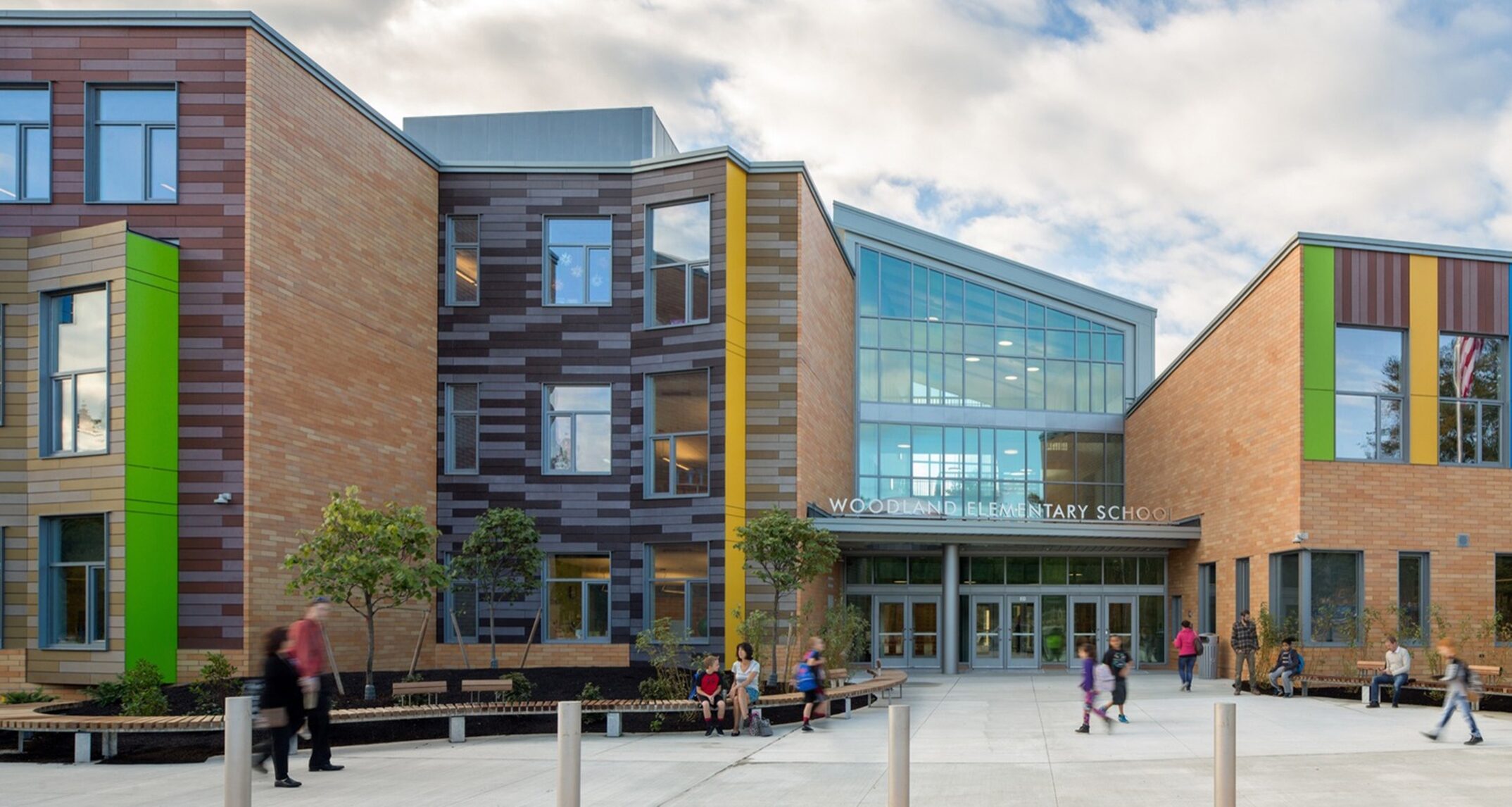
Woodland Elementary School - HMFH Architects Copyright Ed Wonsek
Our world around our schools is changing at a more rapid pace than at any time in human history. Schools and educators need to mirror that pace of change. We can no longer just provide direct instruction with students sitting in rows passively taking in material from the teacher who serves in the role of sage on the stage. This is where thoughtful school design can have a truly positive impact on student learning and growth. The use of space can drive how students and teachers interact and engage with curriculum. Students need flexibly designed spaces that allow for easy interaction with their teachers and peers in small groups, as a whole class, and in stations or centers.
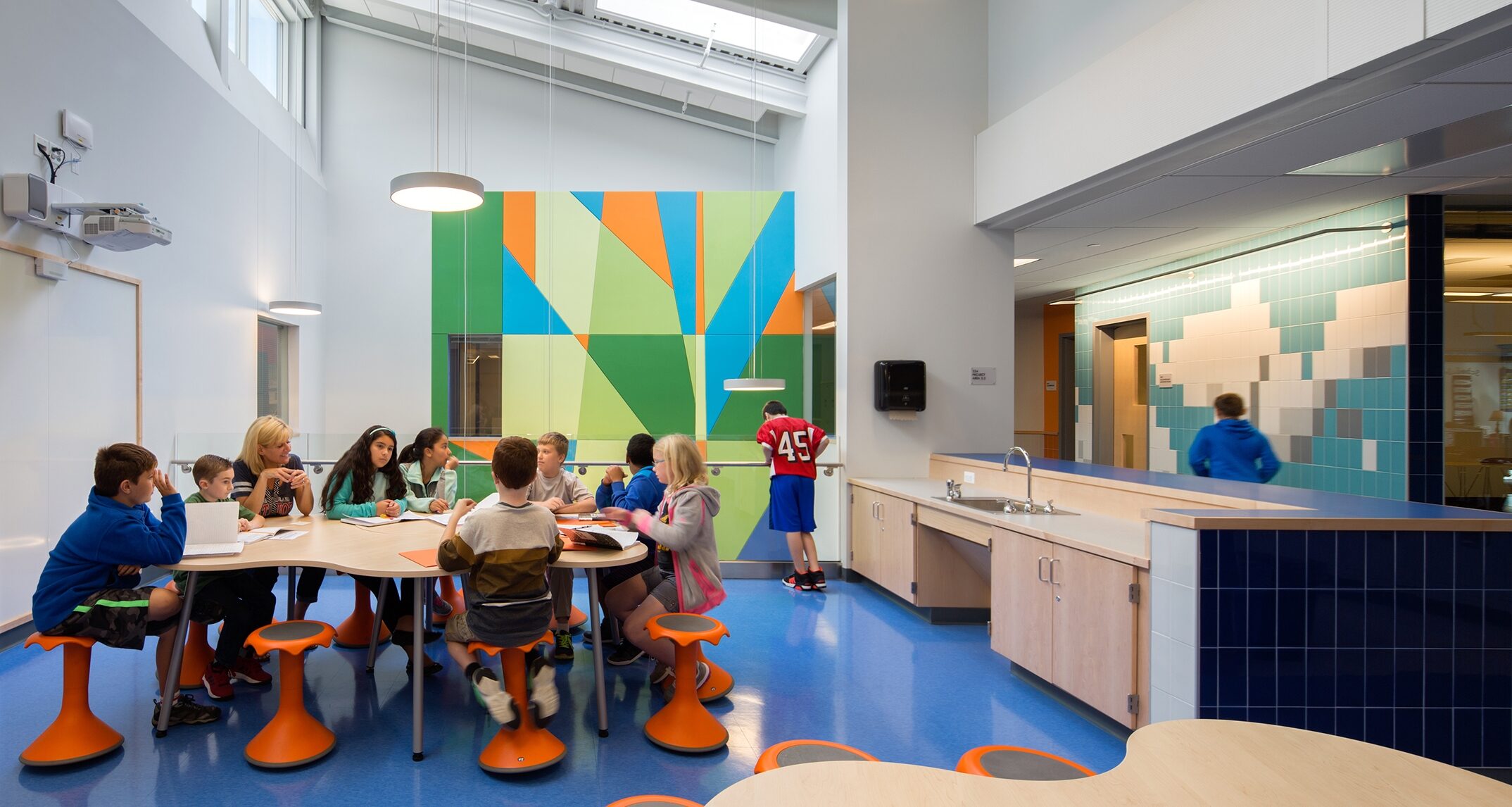
Woodland Elementary School - HMFH Architects Copyright Ed Wonsek
Design and space impact learning. We recently opened a new elementary school that has created new opportunities for learning and collaboration because of the way learning spaces were planned and designed throughout the building. Every space now is a learning space and students are learning and working everywhere. Suddenly hallways become flexible learning spaces where students can work collaboratively on projects and interact with their peers to support learning across content areas.
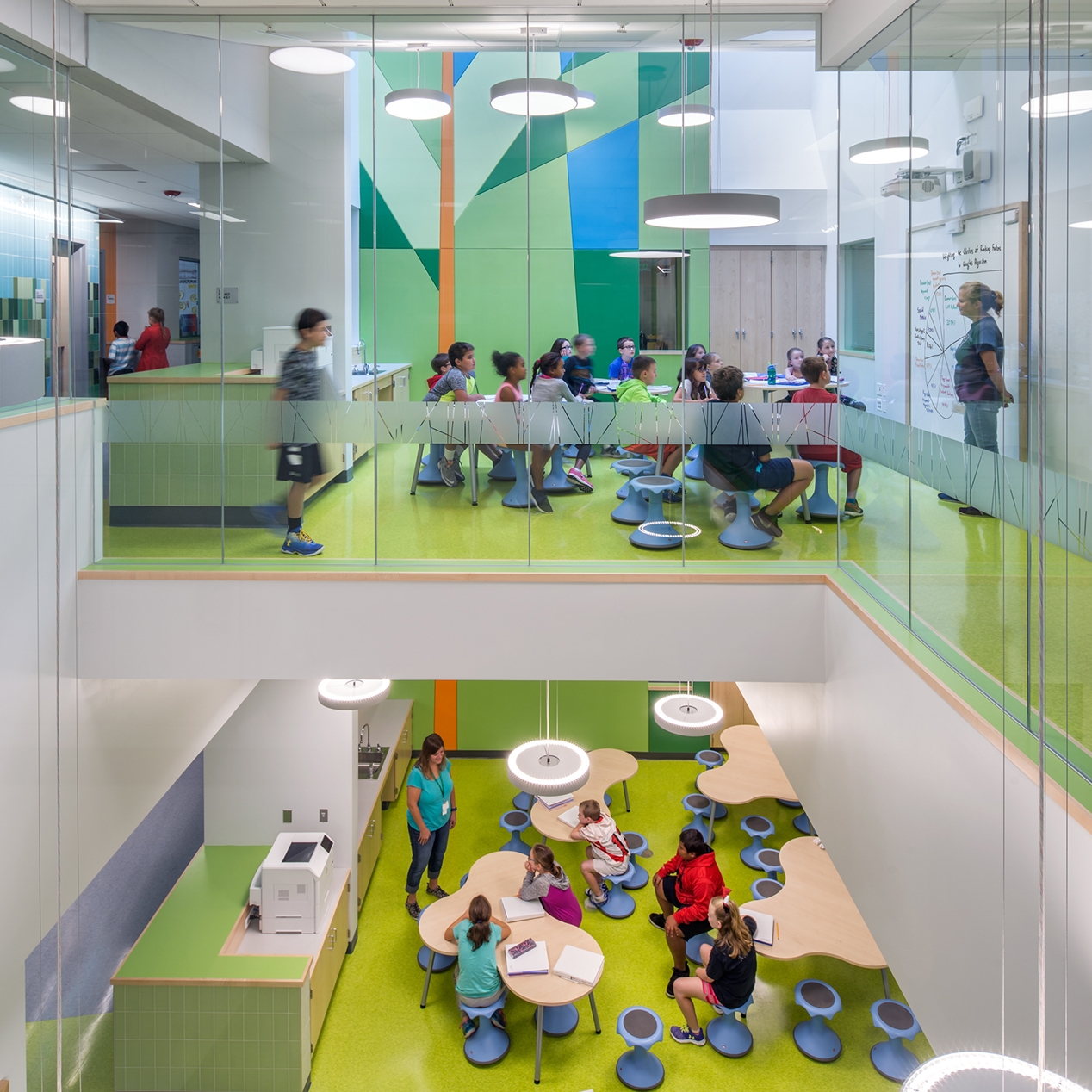
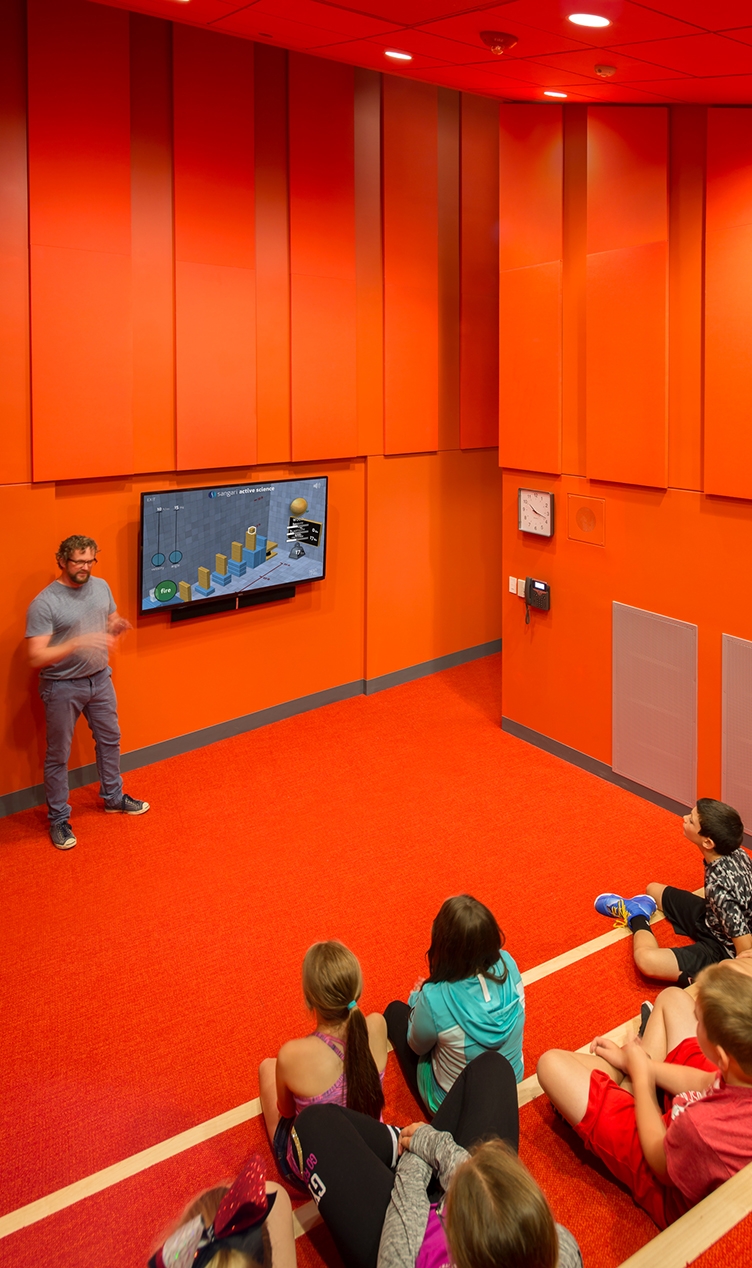
Woodland Elementary School - HMFH Architects Copyright Ed Wonsek
Woodland Elementary Principal Tim Kearnan said, “Teachers are using the flexible learning spaces at Woodland in a variety of ways including as breakout spaces for small group and or individual instruction, as a project area for 'spreading out' with a variety of materials and groupings, as presentation or amphitheater spaces for slideshows or dramatic performances, or as 'quiet zones' for students in need of an alternate setting.” Flexible design allows for meeting student needs in a number of very important ways.
We want our students to be active and engaged learners and using multiple spaces or settings even during a single class period through different activities can help meet these goals. I want all of our students to be prepared for this shifting world by developing communication and collaboration skills; becoming creative and adaptable problem solvers; and building perseverance, personal initiative, and the ability to self-reflect. Our use of space and the design of space can support the development of these skills in all students.
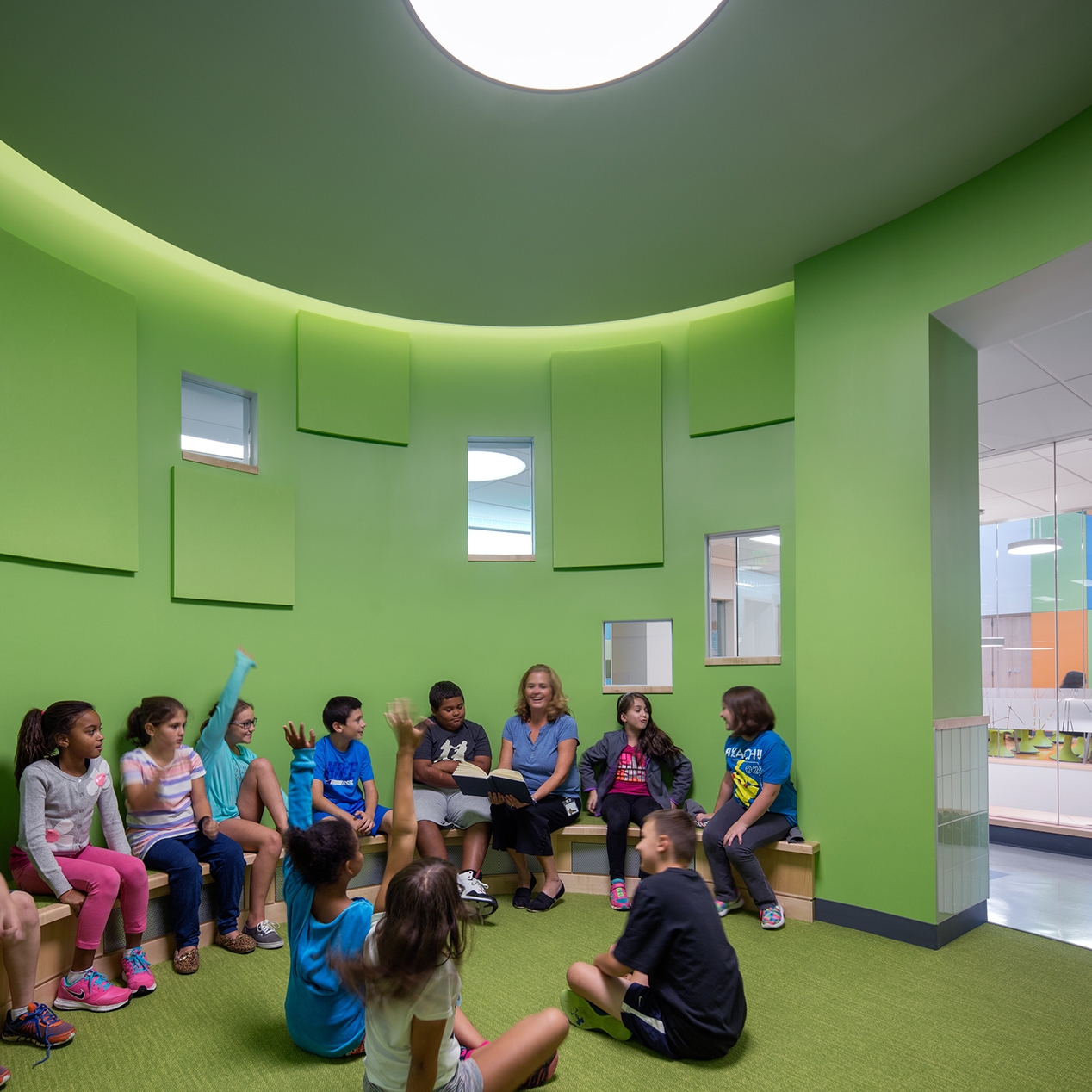
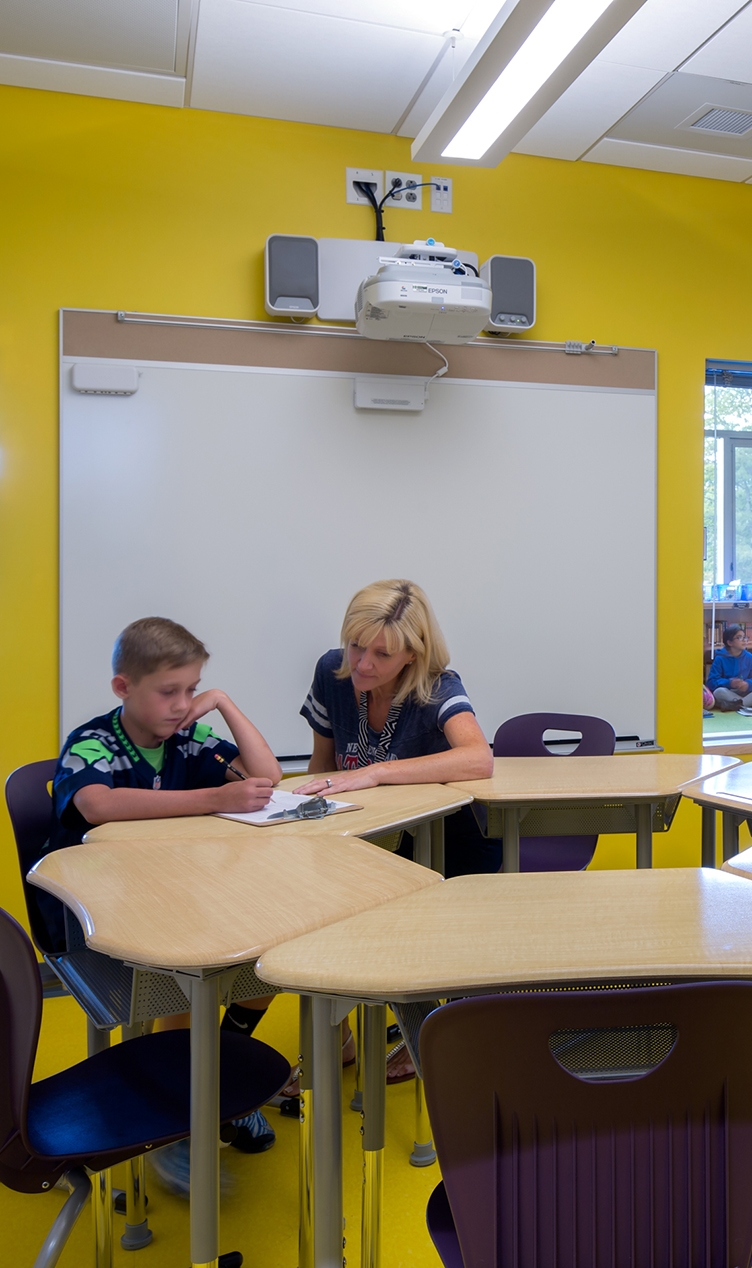
Woodland Elementary School - HMFH Architects Copyright Ed Wonsek
We have used the hallway learning spaces for a number of engaging activities including as student collaboration spaces for internet-driven research projects, as a living gallery where our 8th grade students have shared projects on China with their 5th grade colleagues, and as an active space where students conduct science experiments or play math games. Design is critical in supporting learning and our use of space can support creative and engaging lessons in all grades and for all students.
